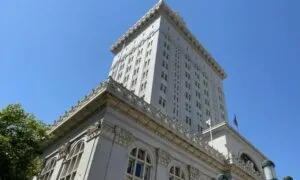Fair treatment and personal freedom have fueled countless efforts across American history. People from different backgrounds joined hands, even when the odds felt daunting, to challenge unjust systems and claim fundamental rights.
Some events captured national attention and proved that courageous actions can redefine public opinion, legislation, and day-to-day life. The following milestones highlight how grassroots energy, steadfast leaders, and persistent hope reshaped law and culture.
Each example shows that progress takes time but can become unstoppable once fueled by unity and moral conviction.
Table of Contents
Toggle1. The Emancipation Proclamation (1863)

A pivotal chapter began on January 1, 1863, when President Abraham Lincoln proclaimed freedom for individuals enslaved in Confederate states. Word spread across battle lines, offering new meaning to a conflict raging in fields and towns.
Many enslaved persons suddenly saw a path toward liberation, even if that path remained risky in Confederate territories. Folks living under constant oppression had no guarantee that official orders would be honored.
Still, those words symbolized a profound moral shift. Public sentiment in the North rallied around the war as not just a union-preserving venture but also a struggle for human dignity. Families torn apart by enslavement found renewed determination.
The Proclamation technically left some slaveholding areas untouched at the time, yet it set a historic precedent. Over the next few years, a broader national awakening gathered momentum, culminating in constitutional changes that banned slavery outright.
Momentum from Lincoln’s bold step steered the country into new conversations about equality and contributed to the ratification of amendments that outlawed forced labor and guaranteed citizenship for millions.
That single document, though limited in immediate scope, planted a seed of hope that refused to die.
Why I Believe It’s Iconic
I recall reading accounts of enslaved people learning about Lincoln’s words and feeling hope for the first time. The idea of liberation, though incomplete at first, must have felt like a promise worth risking everything to pursue.
In my opinion, that moment transformed a political battle into a moral one. It set the stage for permanent change and served as a rallying cry for anyone who believed that no person should ever be treated as property.
2. Ratification of the 13th, 14th, and 15th Amendments (1865–1870)
Following the Civil War, the United States amended its Constitution to clarify the status and rights of formerly enslaved people. Three distinct amendments arose. The 13th Amendment, passed in 1865, abolished slavery nationwide.
The 14th Amendment, which followed in 1868, recognized all individuals born or naturalized in the country as citizens, granting them equal protection under the law. The 15th Amendment, ratified in 1870, guaranteed that race or previous bondage could not be used to deny the right to vote.
Those changes sparked both celebration and fierce resistance. Formerly enslaved families gained a legal foothold in communities that had once considered them property.
Yet segregationists worked tirelessly to impose new restrictions through discriminatory practices. What appeared on paper as a guarantee of freedom and equality did not automatically translate to everyday life in many parts of the nation.
Supporters of these amendments found they had tools that could be used in court. Advocacy groups flourished, citing constitutional rights to fight new discriminatory policies.
Although battles continued, the powerful language enshrined in the Constitution served as a backbone for decades of civil rights campaigns. Even as some local governments tried to side-step federal guidelines, the amendments’ very existence signaled a move toward a more inclusive national identity.
Why I Believe They’re Iconic
When I first learned about the sheer effort required to push these amendments through Congress and secure ratification across states, I felt awe. Slavery’s bitter remnants lingered, and prejudice did not vanish with the stroke of a pen.
Still, the legal framework allowed activists to challenge unjust policies. As I reflect on how often these amendments have been cited in courtroom battles over racism and voter suppression, I realize they functioned as a powerful shield for many generations.
They remind me that the law can be a critical tool in the hands of those aiming to safeguard basic liberties.
3. Brown v. Board of Education (1954)
A landmark legal victory arrived in 1954, when the U.S. Supreme Court threw out the old “separate but equal” doctrine governing public schools. Thurgood Marshall led the legal argument on behalf of families who felt their children were harmed by segregation.
In reaching its decision, the Court recognized that separate classrooms for Black and white students, by design, created harm. Reactions varied from jubilant celebrations to organized defiance.
Some regions dragged out integration for years, placing Black families in harm’s way as they fought for equal education. Despite fierce resistance, the ruling kept pushing communities toward dismantling barriers that had seemed unbreakable.
The case sparked vital questions about fairness, the influence of the federal government, and the moral imperative to give every young person a fighting chance at success. Far beyond the classroom, Brown v. Board of Education inspired many who were hungry for justice.
Activists felt encouraged to press on for meaningful reform in other parts of society. The principle that forced separation equals harm became a guiding light for future legal battles.
Even today, the Brown decision is celebrated as an essential reminder of what determined citizens and clever legal strategies can achieve when they aim for a more inclusive future.
Why I Believe It’s Iconic
When I think of children forced into crumbling classrooms while others received far better resources, I sense the injustice instantly. It moves me that a legal victory aimed at education had the power to shake an entire social structure.
That verdict laid groundwork for future efforts to desegregate parks, hospitals, and other public spaces.
I find special inspiration in how everyday families found their voices, and how the Supreme Court finally recognized the inherent harm segregation caused. It was a vital shift that encouraged more challenges to old power dynamics.
4. Montgomery Bus Boycott (1955–1956)

On a December evening in 1955, Rosa Parks refused to yield her seat on a segregated bus in Montgomery, Alabama. That courageous act launched a 381-day boycott organized by local Black leaders.
People walked, carpooled, and found creative ways to avoid city buses. Martin Luther King Jr., then a relatively unknown pastor, stepped forward to advocate for peaceful protest and unity among the region’s Black community.
Many faced harassment, job loss, and threats. Boycott participants remained steadfast, relying on one another for rides to work and visits to the grocery store. Local officials tried everything, from issuing fines to arresting leaders, hoping to crush their collective spirit.
Ultimately, the protests led to a Supreme Court ruling that banned segregation on public buses. The boycott’s success demonstrated how grassroots power could force systemic change.
It also catapulted King onto the national stage, forging a template for nonviolent action that would inspire other major campaigns. Everyday people learned how to pool resources, stand strong, and focus on a shared goal that benefited an entire community.
Why I Believe It’s Iconic
I love that an ordinary person’s courage turned into a movement that ended in a Supreme Court ruling against bus segregation.
Whenever I read about how day-to-day sacrifice—like finding rides in the pouring rain or trying to retain one’s job without a reliable commute—brought the city to its knees, it makes me believe that grassroots activism can crack any system of oppression.
The boycott thrust Martin Luther King Jr. into the spotlight, providing an enduring example of peaceful protest that resonates with me to this day.
5. Little Rock Nine (1957)

In 1957, nine Black teenagers enrolled at Central High School in Little Rock, Arkansas, testing the federal mandate to end segregated schooling. Their arrival triggered protests and violent threats from local crowds who opposed integration.
President Dwight D. Eisenhower sent federal troops to escort the students into school, affirming that the government would not allow anarchy to override the nation’s laws.
The images of armed soldiers guiding polite, determined teenagers through angry mobs reverberated across the country. Resistance from local authorities highlighted how court rulings alone might fall short when deeply ingrained prejudice took hold.
The Little Rock Nine persevered, despite insults, physical assaults, and relentless intimidation. That showdown showed many Americans how far opponents of equal rights would go to maintain old power structures.
It also confirmed that the government had a responsibility to ensure the Constitution applied equally to everyone. The students’ bravery encouraged other communities to push for integrated education, even when local officials dug in their heels.
That scene in Little Rock remains a testament to the power of youth resilience and federal resolve.
Why I Believe It’s Iconic
I can’t help but imagine what those kids endured: daily harassment, physical confrontations, and the emotional toll of trying to learn in a hostile environment.
Yet they persevered, leaving a permanent mark on how far we must sometimes go to enforce rulings that are supposedly set in stone.
For me, their story underscores the fact that legislation alone can’t achieve change—someone has to walk into the school building and claim the right to be there. That courage resonates with any person who’s ever stood on the front lines of social transformation.
6. Greensboro Sit-ins (1960)
A few college students from North Carolina Agricultural and Technical State University changed the national conversation in February 1960. They walked into a Woolworth’s lunch counter in Greensboro, sat down, and waited to be served.
The staff refused, following a longstanding policy that barred Black customers from sitting at the counter. Rather than leave, the students remained seated until closing time. News quickly spread.
Over the following days, more students joined, and the movement expanded to nearby cities. Nonviolent protest tactics — sitting quietly, refusing to retaliate when confronted — captured media attention and won support from many different corners of society.
Businesses that enforced segregation began to feel an economic squeeze, as boycotts and negative publicity hurt their bottom line. The sit-in movement introduced a new generation to direct action.
Students who were previously uninvolved in formal politics found an outlet for their frustration and hope.
By simply placing themselves in spaces from which they had been unjustly excluded, they underlined the contradiction of a society that claimed to value equality while clinging to segregation.
Lunch counters started changing policies, and a national wave of sit-ins led to a broader examination of unjust practices in schools, theaters, and other public venues.
Why I Believe It’s Iconic
To me, the sit-in movement offers a blueprint for peaceful resistance that is both simple and radical: put yourself where you supposedly “don’t belong” and wait. That approach exposed the blatant hypocrisy of a society claiming to value freedom.
I appreciate how the tactic empowered everyday youth who weren’t necessarily involved in politics. It changed the entire dynamic of the civil rights movement by showing that small, quiet acts of refusal can chip away at even the most entrenched prejudices.
7. Freedom Rides (1961)

Inspired by earlier efforts, a group of activists known as the Freedom Riders challenged segregated seating arrangements on interstate buses. These brave individuals boarded buses and set out for regions where local authorities ignored federal rulings against transit segregation.
In many towns, they met with violence, mob attacks, and arrest. Local law enforcement sometimes turned a blind eye to the abuse, or blamed the riders themselves. Shocking images of burning buses and bloodied volunteers circulated nationwide.
Public outrage grew, and federal officials stepped in to enforce integration rules for interstate travel. Their story showcased the power of direct, nonviolent action and cross-racial solidarity.
Black and white riders worked as a team, demonstrating that public policy could be confronted head-on. Journalists played a critical role by capturing the brutal response to peaceful protesters, galvanizing political will for change.
The Freedom Riders proved that a relatively small group of ordinary people could shift national debates and prod the government into upholding constitutional rights.
Why I Believe It’s Iconic
The bravery displayed by those riders strikes me as extraordinary. They willingly entered places notorious for hate-filled mobs to highlight the federal government’s inaction.
It was a stark demonstration that written rulings mean little if local authorities refuse to comply. I draw inspiration from the bonds formed on those buses.
They broke color lines among protesters themselves, proving that unity across racial identities could amplify a message. Their actions forced officials to step in and uphold the law more aggressively.
8. March on Washington (1963)
August 28, 1963, saw one of the most iconic gatherings in modern American history. Over 200,000 people converged on the National Mall in Washington, D.C., pressing for fair treatment at work and in society for Black Americans.
Martin Luther King Jr. stepped forward to deliver a speech that called for a country free from racial discrimination, famously declaring, “I have a dream.” The sight of men and women, families and friends, traveling long distances to stand shoulder to shoulder sent a clear message.
Organizers worried about potential violence, but the day passed peacefully. A wide range of participants listened to artists, activists, and labor leaders, all calling for meaningful reform.
That demonstration built momentum for future laws aimed at ending segregation and discrimination. Political figures could not ignore the sight of so many Americans gathered peacefully around a unifying cause.
Although the event did not wipe away centuries of injustice, it inspired countless citizens and placed a spotlight on fairness as both a moral and political necessity.
Why I Believe It’s Iconic
The sight of such a massive, peaceful crowd from all walks of life suggests an irresistible moral force. I often imagine how participants felt, gathering by the Reflecting Pool, hopeful that change was near.
That rally offered an unforgettable image of unity that pressured politicians to accelerate legislation aimed at protecting civil liberties. The event proved how an organized assembly could grab the entire world’s attention, planting seeds for bills that soon became law.
9. Civil Rights Act of 1964

A turning point arrived the following year, when President Lyndon B. Johnson signed legislation that banned discrimination in many walks of life.
The law forbade segregated public accommodations, such as hotels and restaurants, and prohibited hiring bias on the grounds of race, color, religion, sex, or national origin.
For a country where “Whites Only” signs had been commonplace in many areas, this felt like a giant leap forward. School districts faced new obligations to integrate. Private businesses risked legal actions if they refused service to patrons based on race.
Although some places moved grudgingly or tried to skirt enforcement, the new legislation carried real weight in courts. Activists who had marched, sat down at lunch counters, and risked their lives on Freedom Rides realized a major goal.
Those gains did not solve all inequities, but they sparked a fresh wave of hope and firm legal backing. Rallies and lawsuits expanded, pushing institutions to comply.
Momentum continued to build, leading to even more robust legal protections. Many consider 1964 a watershed year for the nation, when a centuries-old system of institutional segregation began to crumble from coast to coast.
Key Provisions
- Outlawed discrimination in public accommodations
- Barred employers from discriminatory hiring practices
- Allowed the federal government to enforce school integration
Why I Believe It’s Iconic
I see it as a watershed moment where federal power was explicitly used to dismantle centuries of entrenched bias. While reading oral histories, I learned how some businesses resisted or tried to get around the law, but momentum was on the side of change.
Watching activists celebrate that achievement reminds me that persistent campaigning, public marches, and direct action can eventually spark legislative breakthroughs.
It stands as a crucial milestone that expanded hope for many, and it remains a key reference point in modern civil rights debates.
10. Voting Rights Act of 1965
Even after the Civil Rights Act passed, many Black voters in southern states faced tests designed to keep them out of polling booths. Local officials used rigged literacy exams, poll taxes, or sheer intimidation to stop registration.
In early 1965, activists organized marches from Selma to Montgomery, Alabama, to protest those unfair barriers. Peaceful marchers were assaulted by police on the Edmund Pettus Bridge, a moment so shocking it spurred national outrage.
President Johnson appeared before Congress and called for robust voting protections. Lawmakers responded with the Voting Rights Act of 1965. Federal examiners gained power to oversee voter registration in areas known for discrimination.
Within months, voter registration drives soared, and Black political participation rose significantly. Advocates recognized that free and fair elections form the bedrock of democracy.
By removing hurdles that targeted Black citizens, the nation moved closer to its promise of equal opportunity. The act did not magically eliminate every barrier, but it gave millions a new voice in the public sphere.
Election officials could no longer hide behind bogus rules to block entire communities from shaping policy. That newfound power helped transform local leadership and fueled long-term social change.
Key Highlights
- Eliminated discriminatory voting tests
- Allowed federal oversight of local elections
- Boosted Black voter turnout and registration
Why I Believe It’s Iconic
I find it powerful how the national conscience was jolted when peaceful protesters were attacked simply for wanting a voice in elections. President Johnson soon called for legislation that would ensure voting equality.
The Voting Rights Act, passed that year, gave the federal government the ability to keep an eye on regions known for blocking voters.
Registration soared as a result, and I see that surge as proof that a single barrier—like a literacy test—can shape entire communities’ political futures.
Removing those barriers allowed many more citizens to help choose their representatives, creating a more inclusive democracy.
Summary
Those milestones symbolize collective courage, relentless hope, and moral responsibility. Driven by both prominent leaders and everyday folks, campaigns for civil rights reshaped laws, attitudes, and possibilities for millions of Americans.
Each success opened new doors, yet also served as a reminder that equitable treatment takes constant vigilance. Progress emerged from a broad coalition, from those who marched in the streets to legal minds working in courtrooms.
Efforts to uphold liberties and honor human dignity are still relevant. Structural discrimination has not vanished, and many modern movements draw inspiration from historical victories.
By revisiting pivotal moments like the Emancipation Proclamation, the Montgomery Bus Boycott, or the Voting Rights Act, communities see that deep changes are possible when people stand firm and collaborate.
Even if the road stretches long, the destination — a more just society — stands within reach for those who dare to keep going.
Related Posts:
- Safest Countries in the World in 2025 - GPI…
- 26 Most Dangerous Cities in US - Updated Statistics for 2025
- Capital Cities in Europe: Top Destinations For You…
- Top 11 Civil Rights Organisations Promoting Equality
- Legislative Tracker: Pro-LGBTQ Nondiscrimination Legislation
- America's Murder Capitals: A 2025 Ranking of the…








